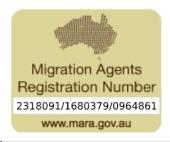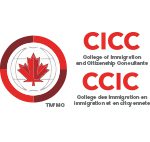Italy Work Visa (D-Visa) & Residence Permit Guide
The Italy Work Visa (D-Visa) is the primary route for non-EU nationals seeking employment in Italy, followed by a residence permit to stay long term. This guide explains the eligibility, application process, and key requirements to help you understand how to work and settle legally in Italy.
What is the Italy Work Visa?
For non-EU nationals who plan to live and work in Italy, you must first obtain a national work visa (known as a D-Visa) to enter the country. Once in Italy, you are required to apply for a residence permit (Permesso di Soggiorno) within eight days of arrival to legally live and work.
This dual requirement ensures that non-EU citizens comply with both immigration entry rules and in-country authorization procedures.
Who Needs an Italy Work Visa (National D-Visa)?
- Non-EU nationals who intend to live and work in Italy under a job contract
- Applicants entering on a long-stay work visa (beyond 90 days)
- Non-EU workers subject to the quotas (Decreto Flussi) for employment immigration
- Individuals whose employer must apply for a work authorisation (Nulla Osta al lavoro) before visa issuance
- Non-EU nationals entering Italy for seasonal, self-employment, or non-seasonal employment under the annual quota system
- Those converting a current stay (e.g. student, training) into a work permit, where a visa is needed to legalise the change.
Italy Work Visa Process (Step-by-Step)
Step 1: Employer secures work authorisation (Nulla Osta / work permit)
The Italian employer must request a work authorisation (Nulla Osta) through the One-Stop Shop for Immigration (Sportello Unico Immigrazione) in the province where the job is located. This step is subject to the annual quotas under the Decreto Flussi, unless the role is exempt.
Step 2: Apply for the D-Visa at the Italian consulate or embassy
Once the work authorisation is approved, the worker applies for a national long-stay work visa (Type D) at the Italian consulate or embassy in their country of residence, submitting the visa application along with the Nulla Osta.
Step 3: Enter Italy and sign the Contratto di Soggiorno
After entering Italy with the D-Visa, the worker must sign the Contratto di Soggiorno (residence contract) within 8 days of arrival.
Step 4: Apply for the Permesso di Soggiorno (residence permit)
The residence permit application must be filed either at the post office (using the immigration “kit”) or at the local immigration office (Questura), together with the necessary documents such as the signed contract, visa, and proof of accommodation.
Step 5: Biometrics and collection of the permit
The applicant attends an appointment to provide fingerprints, photographs, and other biometrics. After processing, the residence permit (Permesso di Soggiorno) is issued, granting the legal right to live and work in Italy.
Visa Types & Work Routes: Who Qualifies in Italy
Below are the main visa types and work routes for non-EU nationals wanting to work in Italy, along with who typically qualifies:
- Employed Worker (Standard) — Non-EU nationals with a job offer from an Italian employer; usually requires a work authorisation (Nulla Osta) via the Migration & Home Affairs channel.
- Seasonal Worker (Agriculture / Tourism) — Non-EU nationals entering for limited seasonal work under Italy’s annual quota system, particularly in agriculture, tourism, or related sectors.
- Intra-Corporate Transferee (ICT) — Employees of multinational companies being transferred internally to an Italian branch, often under special transfer rules.
- EU Blue Card / Highly-Qualified Worker — Highly skilled non-EU workers with a binding job offer that meets salary and qualification thresholds, qualifying under EU Blue Card rules.
- Self-Employment / Startup / Freelance — Entrepreneurs, freelancers, or self-employed professionals who meet economic, financial, and regulatory criteria (business plan, capital, licenses) to operate independently.
Quotas (Decreto Flussi) & 2025–2028 Outlook
Italy regulates the entry of non-EU workers through an annual quota system known as Decreto Flussi. For 2025, the government has set a total quota of 181,450 places across non-seasonal, seasonal, and self-employment categories. In mid-2025, the government also approved a draft three-year plan (2026–2028) that would allow up to 497,550 new work visas over the period, including 164,850 in 2026.
| Year / Period | Total Quota / Planned Entries | Breakdown / Notes |
| 2025 | 181,450 total | 70,720 non-seasonal work; 110,000 seasonal; 730 self-employment |
| 2026 (first year of 3-yr plan) | 164,850 planned entries | Initial allocation under the multi-year scheme |
| 2026–2028 (cumulative) | 497,550 planned entries | Spread across all three years (2026, 2027, 2028) |
| 2027 / 2028 (projected) | ~165,850 / ~166,850 | Incremental increases each year under the draft scheme |
Notes:
- The 2026–2028 quotas are currently in draft form; official publication in the Gazette is pending.
- Historically, not all quotas have been fully utilised due to employer demand and administrative capacity.
- Certain categories, such as highly qualified professionals and intra-corporate transferees, are exempt from quota limits.
Italy Work Visa Fees (Visa & Residence Permit)
The following table shows the standard fees for national visas (long stay) and residence permit cards in Italy, along with related administrative costs:
| Fee Type | Fees |
| Visa Fee (national D-visa, non-USV) | € 116 |
| Residence Permit (3 to 12 months) | € 40 |
| Residence Permit (12 to 24 months) | € 50 |
| Long-term / EC / Intra-company / Highly Qualified | € 100 |
| Administrative / Postal Kit | ~ €30 |
| Electronic card issuance / fee | ~ €30.46 |
| Tax stamp (marca da bollo) | € 16 |
Italy Work Visa Processing Time
The processing time for an Italy Work Visa and residence permit can vary depending on several factors, including annual quota availability, the speed of nulla osta (work authorisation) approval, the workload of the Italian consulate handling your application, and local police (Questura) scheduling once in Italy. While Italian law requires residence permits to be issued within 60 days of application, the overall process typically takes 2 to 6 months end-to-end.
| Stage | Typical Timeline |
| Employer obtains work authorisation (Nulla Osta) | A few weeks to several months, depending on quotas |
| Visa application at Italian consulate | 2–8 weeks, depending on consulate workload |
| Entry into Italy & residence contract (Contratto di Soggiorno) | Within 8 days of arrival |
| Residence permit (Permesso di Soggiorno) issuance | Legally within 60 days, but often 2–4 months in practice |
Employer’s Role & Required Documents
Employer’s Role
- Apply for the work authorisation (Nulla Osta) through the One-Stop Shop for Immigration (Sportello Unico).
- Ensure the job position falls within the annual work quotas (Decreto Flussi) or qualifies under an exemption.
- Provide a valid employment contract outlining job details, salary, and duration.
- Commit to supporting the worker in signing the residence contract (Contratto di Soggiorno) after arrival.
Documents the Employer Must Provide
- Copy of the signed job contract or job offer letter with role and salary details.
- Proof of suitable housing or accommodation for the worker.
- A return travel guarantee (if required by the authorities).
- Company registration and compliance certificates (e.g., tax compliance, labour law adherence).
- Identification documents for the employer and the prospective employee.
After You Arrive in Italy — 8-Day Checklist
Upon arriving in Italy on a long-stay (work) visa, non-EU nationals should complete the following within eight days to regularize their stay:
- Sign the Contratto di Soggiorno (residence contract) with your employer where required
- Collect the residence permit application “kit” from a Post Office (Sportello Amico)
- Submit the completed application packet to the Post Office or forward it to the Questura / local immigration office
- Attend an appointment for fingerprints, photographs, and biometric data at Questura
- Collect your Permesso di Soggiorno (residence permit) when it is ready
- Register your address (Iscrizione Anagrafica) with the local Comune / municipal registry, when required
How Y-Axis Can Help You?
- Identify the best strategy — We assess your profile and goals to recommend the most effective approach, boosting your chances of securing a German job visa.
- Compliance navigation — Y-Axis guides you through immigration rules and legal requirements, helping prevent mistakes and rejections.
- Sync with quotas and timelines — We align your application with annual quotas and submission windows to maximize success.
- Step-by-step guidance — Our experts advise you on completing each stage of the process, including accurate filling of essential documents.
- Document vetting and review — Y-Axis screens and verifies all documents before submission to minimize the risk of refusal.
- End-to-end support — From initial consultation to final outcome, we provide continuous assistance at every stage of your visa and permit journey.
Our Accreditations |
|||
 |
 |
 |
 |
Looking for Inspiration
Explore what Global Citizens have to say about Y-Axis in shaping their future
Frequently Asked Questions
